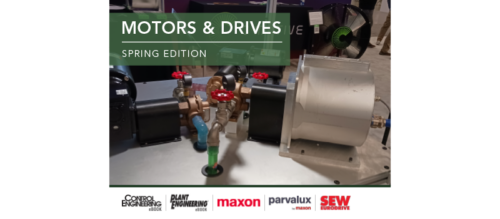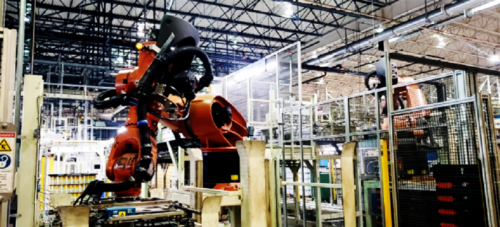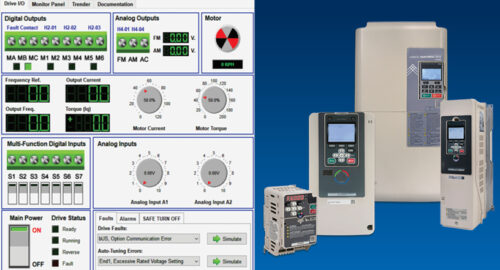KPIs from a Lean perspective: Achieve goals, reduce waste
Sir Francis Bacon, the 16th century English philosopher, wrote: “Knowledge is power.” He was right of course – but with an important caveat. Knowledge becomes truly powerful when it leads to change. Knowledge gained from real-time plant floor Key Performance Indicators can unleash powerful forces of change that result in significant improvements within your manufacturing opera...
Sir Francis Bacon, the 16th century English philosopher, wrote: “Knowledge is power.” He was right of course — but with an important caveat. Knowledge becomes truly powerful when it leads to change. Knowledge gained from real-time plant floor Key Performance Indicators can unleash powerful forces of change that result in significant improvements within your manufacturing operation.
A KPI is a measurement that strongly supports and facilitates achieving a critical goal of the organization. KPIs can be viewed from two perspectives: the Lean manufacturing perspective of eliminating waste, and the corporate perspective of achieving strategic goals. These two perspectives are closely related.
Why measure?
KPIs are important for the plant floor because they are highly effective for exposing, quantifying and visualizing muda (the Lean term for waste); and they are also highly effective motivators. The essence of Lean manufacturing and the central theme of the Toyota Production System are to eliminate waste — to relentlessly eliminate all activities that do not add value for your customer. Effective KPIs quantify waste; provide an early warning system for processes operating outside the norm; and offer important hints to where improvement efforts should be focused.
KPIs also function as very effective motivators. Motivation theory is a complex field with many diverse opinions. However, there is wide agreement that a central key to effective motivation is setting challenging but attainable goals (e.g. SMART goals, which are Specific, Measurable, Achievable, Realistic and Time-specific). SMART goals are ideal candidates for plant floor KPIs.
For example, a manufacturing plant with semi-automated processes introduced real-time visual KPIs as a means of motivating their operators. One of their engineers mistakenly set the expected run rate for a cell at 180 pieces per minute instead of the normal 140 pieces per minute. Hours later the engineer returned and was astonished to find the cell averaging 178 pieces per minute. Visual KPIs had motivated the operators to greatly exceed what the process engineers had thought was possible.
Yesterday’s news
It is very important for plant floor KPIs to be real-time. “The closer you get to the process, the faster you need information,” said Guillermo Locht, master black belt and Lean leader for GE Consumer & Industrial.
“Getting information to the plant floor in real-time drives productivity,” agreed Laird Brownlie, plant manager at Smurfit-MBI.
In most manufacturing plants, information flow is far from real-time. Production reports are frequently compiled long after a shift or job has ended. Simply put — they are yesterday’s news. “If our operators can see how they are performing minute-by-minute, they can react to changes in the process,” Brownlie continued. “If you have to wait eight hours, you have lost the opportunity to address the underlying issues.”
It is a fundamental principle of all KPIs to be current or forward-looking metrics. For current metrics to be effective, they must be updated frequently. If a production line goes down, the reaction and response must be immediate. For KPIs to be actionable on the plant-floor, it is essential that they be real-time — not yesterday’s news.
Information democracy
Effective plant floor KPIs should energize the plant floor — they should unleash competitive spirit and promote kaizen (the Lean term for continuous improvement). This is achieved by providing both a ‘will’ (a strong desire for improvement) and a ‘way’ (effective tools).
The ‘will’ flows from a culture of trust. The goal isn’t simply to improve a number; it is to truly improve performance. Achieving this requires genuine buy-in from the plant floor. “Numbers are great, but it is the soft side that really gets things done,” said Tom Fink, staff engineer for Honda. “People are competitive; they want to know where they are in relation to their goals.”
The ‘way’ flows from KPIs that can be influenced and controlled by plant personnel. After all, if operators can’t influence the KPI, what value does it provide? Locht advocates a scoreboard approach — giving operators an opportunity to win on a daily basis.
Collectively, this ‘will’ and ‘way’ approach is information democracy: empowering plant floor personnel with actionable information and a meaningful level of control over the process. It’s an integral part of creating effective plant floor KPIs.
Waste times two
There is a connection between the two real-time KPI perspectives: the Lean manufacturing perspective of eliminating waste and the corporate perspective of achieving strategic goals. They are connected through waste.
From a broad Lean perspective, the seven major forms of waste in the manufacturing process include:
Overproduction
Waiting/idle time
Unnecessary transport
Over-processing
Inventory
Unnecessary motion
Defects
Eliminating these wastes requires modifying and improving processes using techniques such as kaizen events and Value Stream Mapping.
From the narrower perspective of existing processes, the Six Big Losses identify and categorize the most common sources of waste in discrete manufacturing operations:
Breakdowns
Changeovers
Slow cycles
Small stops
Startup rejects
Production rejects.
The Six Big Losses lend themselves particularly well to KPI-based tracking, which provides an excellent opportunity to expose and quantify waste in existing processes. For day-to-day operations, this is invaluable. However, it is very important not to lose sight of the bigger picture: improving processes to fully address the seven major forms of waste.
From a corporate perspective, a far more sinister form of waste — one that runs silently beneath the surface — is ‘leadership waste.’ This is waste that results from a misalignment between top-level strategic goals (i.e. corporate strategy) and bottom-level actions (i.e. plant floor activity). Tom G. Jackson, an accomplished Lean practitioner and sensei (Lean mentor, or coach), said a simple but real-world example of misaligned goals might be, “While management is pursuing inventory reduction, the plant floor is trying to improve gross utilization.”
Leadership waste is mitigated through hoshin kanri (the Lean term for strategy deployment). Strategy deployment involves creating goals at the top-most level and cascading them through all layers of the company. “A good KPI should involve the entire team: top management, intermediate management and people on the shop floor,” Fink said. “People are tied and linked to it throughout the entire organization.”
“Goal alignment is critical to success,” added Jackson. “KPIs need to roll up from the plant floor to each level above, so they are in total alignment with the strategic focus.”
From a Lean perspective, leadership waste is every bit as important as the more visible forms of waste that occur on the plant floor. This is waste times two; pay close attention to both.
Selecting KPIs
There is an ideal set of KPIs for the plant floor, but it’s different for every company. Compiling a one-size-fits-all KPI punch-list is virtually impossible. The ideal set of KPIs for your company will be strongly aligned with your company’s strategic objectives and highly actionable by your plant floor personnel. However, two popular KPIs that deserve a closer look are Overall Equipment Effectiveness (OEE) and Target, Actual, Piece Variance (TAP).
OEE measures manufacturing performance as a percentage. An OEE score of 100% represents perfect production: producing only good pieces, as fast as possible, with no down time. It has three components that collectively account for all of the Six Big Losses. Availability accounts for breakdowns and changeovers (downtime loss), Performance accounts for slow cycles and small stops (speed loss) and Quality accounts for startup rejects and production rejects (defect loss). OEE is a valuable metric for managers. However, care must be taken when bringing it to the plant floor to ensure that it is not treated as a utilization metric. Blindly maximizing utilization can lead to the most serious of the seven major forms of waste — overproduction.
TAP is a collection of three real-time metrics: Target (how much should we have produced), Actual (how much have we produced) and Piece Variance (the difference between the two). Target is driven by Takt Time, which is the rate at which production must run to exactly meet customer demand. Piece Variance can alternately be measured as time variance or proportional variance. A piece or time variance of zero represents the ideal — production perfectly in sync with customer demand. Within Lean, TAP is an excellent metric for the plant floor. It is simple, intuitive and directly linked to the customer.
Effective plant floor KPIs are gauges that enable operators and managers to keep their fingers on the pulse of the plant floor. Real time keeps us looking forward instead of backward. Create your own set of effective plant floor KPIs by studying the strategic goals of your company; carefully selecting appropriate KPIs to drive the desired behavior; and then creating the ‘will’ and the ‘way’ to succeed.
Topic
Resource
Key Performance Indicators
Key Performance Indicators ( David Parmenter, John Wiley & Sons, 2007 )
Toyota Production System
Toyota Production System ( Taiichi Ohno, Productivity Press, 1988 )
Lean Manufacturing
The Toyota Way ( Jeffrey K. Liker, McGraw-Hill, 2004 )
Lean Manufacturing
The Toyota Way Fieldbook ( Jeffrey K. Liker & David Meier, McGraw-Hill, 2006 )
I would like to:
Key Performance Indicators
Reduce downtime
Total downtime
Downtime events
Changeover time
OEE availability
Optimize cycle times
Average cycle time
Slow cycles
Small stops
OEE performance
Improve quality
First pass yield
Startup rejects
Production rejects
OEE quality
Meet customer demand
Takt time
Performance to Takt
Piece variance
Estimated time to completion
Improve productivity
Run rate
Pieces per labor hour
Total effective equipment productivity (TEEP)
Overall Equipment Effectiveness
KPI is actionable (can be influenced) by plant floor personnel
KPI is a current or forward-looking metric
KPI exposes and quantifies waste
KPI provides an early-warning system for anomalous processes
KPI is updated frequently (in real-time for current metrics)
KPI is ‘owned’ by an individual (accountability is established)
Author Information
Ramon A. Vorne is President of Vorne Industries, Inc. He directs new product research and development at Vorne, including the integration of real-time KPIs into Vorne products such as the XL Series of “bolt-on” productivity appliances.
Special thanks to Peter Roder and Tom G. Jackson for their assistance with this article.
Do you have experience and expertise with the topics mentioned in this content? You should consider contributing to our CFE Media editorial team and getting the recognition you and your company deserve. Click here to start this process.





